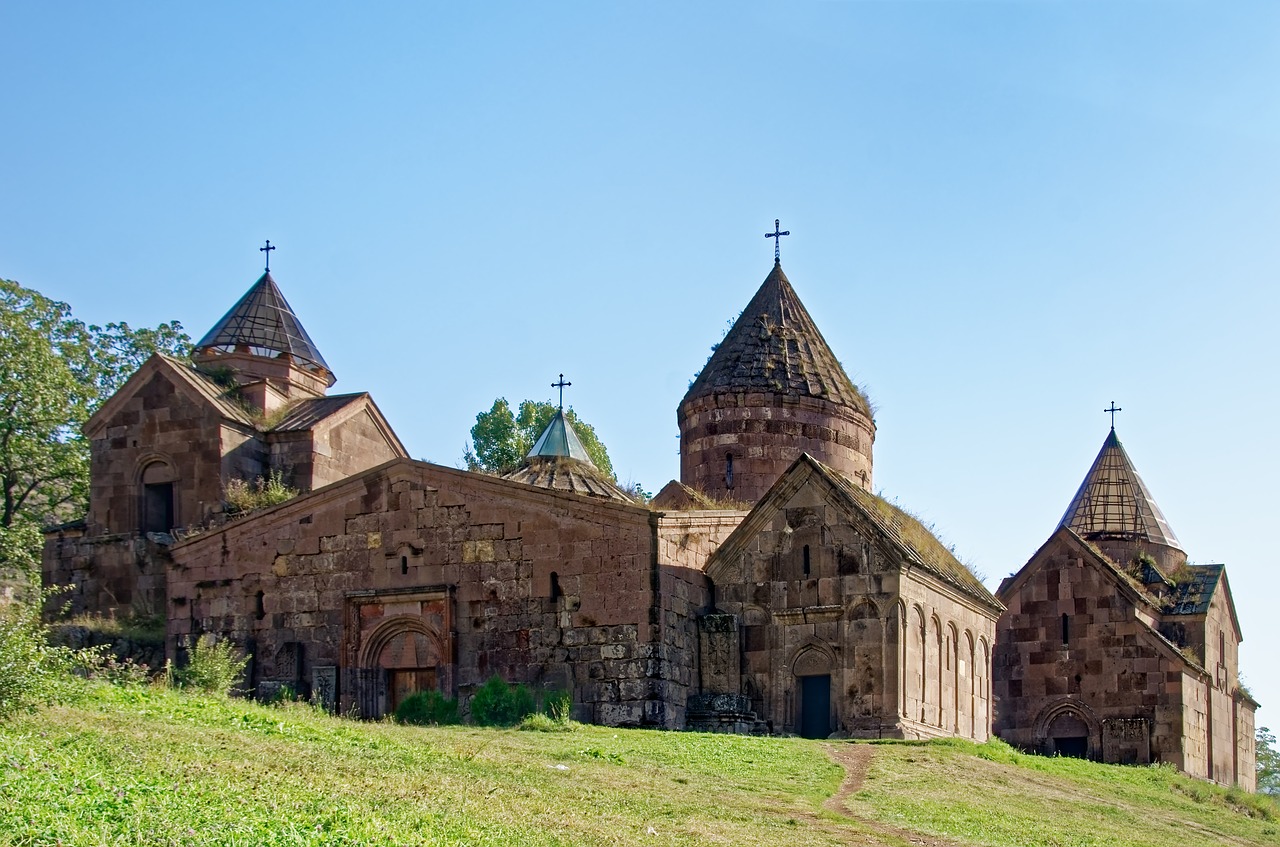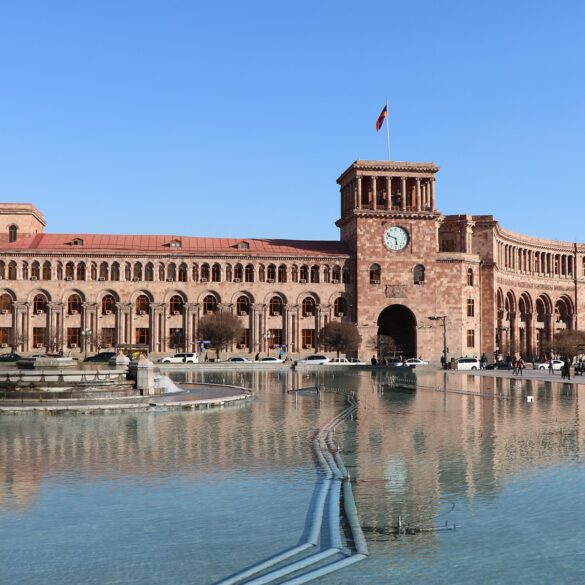
Armenia’s second city and possibly its creative capital is Gyumri. Gyumri is a scenic city in Armenia’s Shirak province, located in the northwestern section of the country. Gyumri’s traditional architecture and rich history will make any traveller fall in love with this city as Armenia’s cultural capital.
The city was devastated by the Spitak earthquake at the end of the 1980s, but thanks to the people’s resilience, its authentic architectural facades have been magnificently restored.
Throughout the decades, many of Armenia’s most outstanding artists, athletes, and musicians have come from Gyumri. Gyumri, just two hours from Yerevan, will wow visitors from all over the world with its hospitality, stunning architecture, delectable local cuisine, and fascinating historical monuments.
Visit Black Fortress aka Sev Berd
The Black Fortress, or Sev Berd, was built in the 19th century from black volcanic tuff by Russian Emperor Nicholas I. It is one of Gyumri’s and Armenia’s most fascinating structures.
During Russian conflicts with those countries, the round-shaped fortification was built to protect Alexandropol from Persians and Turks.
The historic gem now houses an amphitheatre, which has hosted several concerts and events. It is a must-see attraction for anybody visiting the lovely city of Gyumri.
Hang out in Vartanants Square
Vartanants Square, in the middle of Gyumri, is a lovely spot surrounded by Soviet and ancient buildings, fountains, and churches. Alexander Tamanian and D. Chislian designed the Square.
It is simple to begin exploring Gyumri’s old town from Vartanants Square. In the square, the Seven Wounds Church and the massive municipality building are architectural gems. The monument to Vardan Mamikonyan and other freedom fighters who fought against Sassanid Persia is located in the centre of it.
Take Some Photographs at Gymri’s Mother Armenia
The Mother Armenia statue is housed in two locations: Yerevan and Gyumri, the country’s main and second-largest cities, respectively.
Another marvel in Gyumri is the statue, which is located near the Black Fortress and is particularly attractive. It was built in 1975 on a hill outside of town, and it has since become part of the city’s cultural legacy. The magnificent monument of a lady, which is encircled by a beautiful green park and is a must-see for anybody visiting Gyumri, represents the victory of WWII.
Hang by Museum of National Architecture and Urban Life
The Museum of National Architecture and Urban Life is the most visited museum in Gyumri, and it is housed in a historic old mansion in the heart of the old town.
It informs about the life of old Alexandrapol with a great historical atmosphere. Petros Dzitoghtsyan, a wealthy trader, erected the home in 1872.
During the Soviet Union, the mansion was used as a family home before becoming a museum in 1980. From carpets to a fully reconstructed chamber from the 18th century, there are compositions from the city’s urban life from many centuries on show. Gyumri’s Museum of National Architecture and Urban Life is located at 47 Haghtanaki Avenue.



